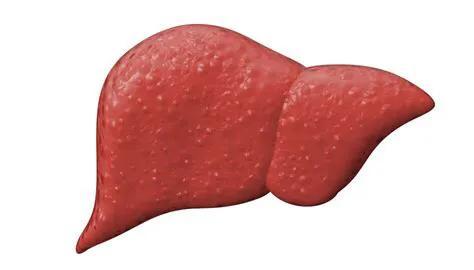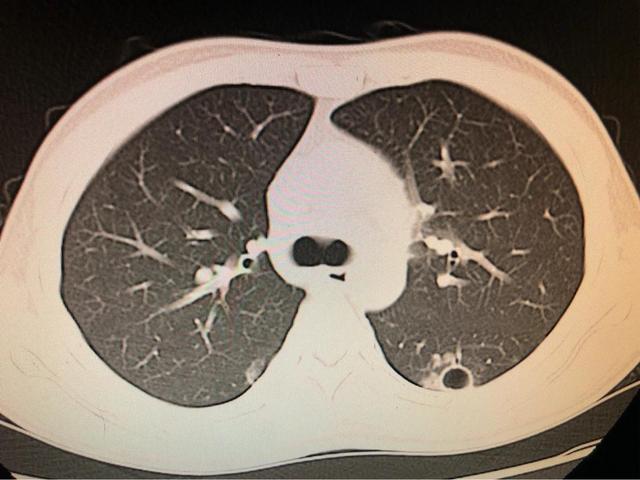Are cirrhosis, AIDS, and tuberculosis incurable?
Cirrhosis, AIDS and tuberculosis are all chronic diseases, whether "incurable", have to be looked at separately: cirrhosis depends on which period of time, early cirrhosis can be reversed; AIDS has not been cured, but through antiviral treatment can control the condition; and tuberculosis has long since ceased to be an incurable disease, can be cured.
All three of these diseases are somewhat unique and are by far the most common diseases faced by infectious disease physicians. Dr. Long is an Infectious Disease Physician and will talk about this topic today to give you a primer.
cirrhosis
Cirrhosis, in layman's terms, is a disease in which scarring occurs in the liver. Because of the increase in scar tissue in the liver, which is harder than normal liver tissue, the disease is imaginatively called "cirrhosis".
In order to cure cirrhosis, it is important to understand the period causes. When the liver suffers damage, it constantly tries to repair itself, and in the process, a lot of scar tissue is formed, and if you don't remove the factors that caused the liver damage, you may get cirrhosis.
So when we look at whether cirrhosis can be reversed, or prevented from progressing further, it's mainly about removing the factors that are causing the liver damage, and how far the cirrhosis has progressed to.
These factors that damage the liver include heavy alcohol consumption, hepatitis B or C, and non-alcoholic fatty liver disease. Alcohol consumption can be stopped, non-alcoholic fatty liver disease requires treatment of concomitant metabolic diseases such as overweight or diabetes, and hepatitis B and C can be treated with antiviral therapy.
Severe cirrhosis is often incurable, and this is when the patient may need a new liver, which is treated with a liver transplant.

AIDS (loanword)
AIDS is an infectious disease, rather a chronic infectious disease. The factors that lead to the onset of the disease and the development of a range of clinical manifestations are due to the destruction of the body's immune cells called CD4-positive T-lymphocytes, commonly referred to as "little 4s", by the AIDS virus (HIV).
The antiretroviral treatments currently in use are able to inhibit HIV replication and even keep HIV at a minimum level, but they are still unable to remove HIV completely from the body. One of the major reasons for this is that there may be a hidden reservoir of HIV somewhere in the human body.
Since HIV, as yet, has no self-healing cases, the question of whether it can be cured is currently difficult to answer, with most pessimistic arguments suggesting that there is no cure for the disease. However, there are a few cases in the world that have been cured through specific methods, and research is still ongoing.

TB
Tuberculosis, like Hepatitis B, AIDS and malaria, is a problem that all countries in the world are trying to overcome, and it is the common enemy of mankind, because these diseases affect a very large number of people.
The main reason why tuberculosis has not been able to be eliminated is that many infectious tuberculosis patients have not been thoroughly treated, but also has an important relationship with the adverse effects of drugs and drug resistance.
But in any case, there is no doubt that TB can be cured, or rather, the vast majority of it can be cured. There is a small proportion of TB patients for whom the available first-line anti-tuberculosis drugs are ineffective, which, together with the inability of poor TB patients to receive timely treatment and to monitor its effectiveness, leads to recurrent TB, which can make it seem as if TB cannot be cured.
To address this problem, tuberculosis patients now receive free anti-tuberculosis medication. The problem of tuberculosis treatment is not only a medical problem, but also a social and economic one. Factors such as human mobility, economic level and basic sanitation all influence the prevalence of tuberculosis.

wrap-up
Tuberculosis, AIDS and cirrhosis of the liver are diseases that are not problematic to control with regular treatment. The problem is that these diseases often do not receive regular treatment and regular reviews. Another key problem is that these diseases can overlap in some patients, resulting in treatment that often misses the point.
Although medical advances nowadays have made the prognosis of these diseases better in the long run, treatment is one aspect of the problem, and the deep-rooted social problems behind the diseases remain unresolved, such as the problems of poverty, poverty due to illness and poverty caused by illness and the return of poverty to the country, which are still serious.

I am a clinician who loves science, seeing patients, consulting, answering questions, solving puzzles, popularizing medical knowledge, and experiencing the power of warm words in the midst of my hurried clinical work!
Feel free to like, comment, retweet and favorite this article if it was useful to you. For more medical knowledge, stay tuned to Dr. Long!
With the continuous development of medical science and technology, many diseases that were called incurable in the past can be controlled or even cured, and have long ceased to be incurable. To know whether a disease is incurable, we should start from recognizing the disease.
I. Cirrhosis
Cirrhosis is a common clinical chronic progressive liver disease with diffuse liver damage formed by one or more etiologic factors over a long period of time or repeated effects. There are often complications such as upper gastrointestinal bleeding, hepatic encephalopathy, secondary infections, hypersplenism, ascites, and carcinomatosis, which are also responsible for exacerbating cirrhosis or causing death. Cirrhosis is usually caused by viral hepatitis, alcohol, drugs, schistosomiasis, autoimmunity and other factors.

The typical symptoms of cirrhosis in most people are hepatosplenomegaly, ascites and jaundice. Of course, two other typical symptoms of cirrhosis are liver palms and spider nevi. A spider nevus is a spider web-like mole located in many places on the patient's face or chest. The center of the nevus is a red spot with many red filaments radiating around it. The growth or decline of a spider nevus is directly related to the function of the liver. Liver palms are reddish-like lesions that appear between the large and small fissures, sometimes forming a mottled pattern.
The treatment of cirrhosis is mostly based on symptomatic treatment according to the cause of the disease, and more drugs are used to protect the liver and liver protection, anti-virus or reduce yellow.
Nowadays, cirrhosis is only an advanced stage of chronic liver disease, although the liver tissue is fibrotic, but it is not incurable, with the progress of medical treatment level, cirrhosis can be reversed, and there are many successful cases of reversal in reality. Only that its reversal requires a long process, never that we take a few months of antiviral drugs, liver drugs or Chinese medicine, can be reversed, as its formation, it is also a slow process of progress.

II. AIDS
AIDS is caused by infection with the AIDS virus (HIV). It mainly attacks the most important CD4T lymphocytes in the human immune system and destroys a large number of CD4T lymphocytes, thus causing the human body to lose its immune function, making the human body susceptible to infection of various diseases and malignant tumors, with a high death rate. It is mainly transmitted through blood, sexual contact and vertical transmission from mother to child.
Effective drugs for the eradication of HIV infection are still lacking worldwide. The main objectives of treatment are to minimize and sustain viral load, obtain immune reconstitution and maintenance of immune function, improve quality of life, and reduce HIV-related morbidity and mortality. The best-known treatment is a cocktail of therapies that take antiviral
Since there are no medicines to treat the disease and no effective vaccine to prevent it, the most important thing is to take preventive measures, clean yourself and stay away from AIDS.

At present, AIDS has been classified as a chronic infectious disease, although there is no symptomatic treatment of drugs, but it is not an incurable disease, as long as the management and care is proper, it is also possible to control the AIDS virus, and the virus to live forever, at present, the world has reported that there are two AIDS patients have been cured.
III. Tuberculosis
Tuberculosis is a chronic infectious disease caused by Mycobacterium tuberculosis infection. The tuberculosis bacteria may invade various organs throughout the body, but mainly invade the lungs, which is called pulmonary tuberculosis, and is mainly transmitted through the respiratory tract. There are often systemic symptoms such as low-grade fever and fatigue, and respiratory manifestations such as cough and hemoptysis. Generally, if the cough and sputum do not heal for more than 2 weeks, combined with other clinical, imaging or laboratory tests, the diagnosis of tuberculosis can be made.

The treatment of tuberculosis usually uses a combination of drugs and follows, early, appropriate amount, combination, regularity, and the whole process, in order to ensure complete treatment. Therefore, tuberculosis is not incurable, it is just easy to be repeated.
To summarize, cirrhosis of the liver, AIDS, and tuberculosis are not incurable diseases, and proper treatment, reasonable medication, and proper prevention are all ways to treat or prevent these three diseases.

This question and answer are from the site users, does not represent the position of the site, such as infringement, please contact the administrator to delete.